2025 – CHW
Videos of out species of Acacia today. Some species do not have leaves as such but Phyllodes which are a development of the leaf stalk into spines or what do resemble leaves. Confusing!
Acacia pravissima nearly over. We had one before but it died in the 2018 Beast from the East in an exposed and far too shady a position. Short lived perhaps but very attractive as a small tree today.
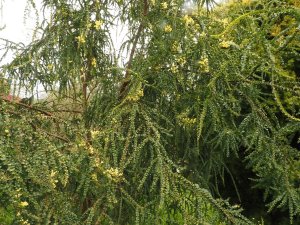
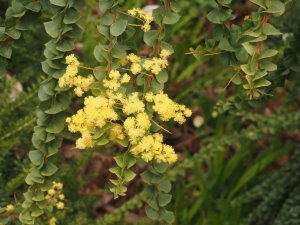
Acacia boormanii was too small to photograph and flowerless still. We need to add to the collection Acacia retinodes which has very similar leaves to Acacia longifolia but the flower is quite different and Acacia covenyi which I see that Burncoose now stocks. One to find on tomorrows visit and bring back here.
Magnolia ‘Yellow Lantern’ just opening and Acacia cultriformis just going over.
2023 – CHW
The first pair of swallows are building their nest above the dog kennels in the Back Yard and were first spotted here on 23rd March which is extremely early. No sign of any house martins yet.

Preparing the multiple Michelia species and hybrids exhibit for the Cornwall Garden Society Spring Show at Wadebridge this weekend has alerted me to two possible misnaming’s here and at Burncoose.
What we have named and labelled as Michelia foveolata has obviously been wrong all along as Tom Hudson and others said years ago. It is in fact Michelia platypetala or, more correctly, now Michelia cavalerei var. platypetala.
I strongly suspect from the description and pictures in the ‘Magnolias of China’ book that the Burncoose Michelia macclurei tree may well actually be Michelia cavalerei. The undersides of the leaves of cavalerei are blush-white while those of macclurei apparently have reddish hairs or indumentum on the underside of its leaves. Neither species is said to have leaf stipules. I cannot be certain from the rather poor ‘Magnolias of China’ pictures but, if the descriptions are correct, then Burncoose grows M. cavalerei.
In any event Michelia platypetala (M. cavalerei var. platypetala) is quite different from Michelia cavalerei as far as its leaf form and flowers are concerned. I am sure there is still a great deal for taxonomists to sort out in the naming of Michelia species and the Chinese are only part way there with classifying all their rare indigenous species correctly.
With their strong flower scent Michelias are notoriously promiscuous in gardens and cross fertilisation of species is highly likely.
Amid the gloom a few flowers high up on our Michelia cavalerei which is the same plant as grows (rather better) at Burncoose. I had not made the connection before now. Had we really never noticed this plant in flower as it is hidden away behind a Schefflera and 2 other Michelias? We do however now know that it probably isn’t Michelia macclurei.
2022 – CHW
More scented rhododendrons rush on into flower although April is still two days away.
Magnolia ‘Joli Pompom’ full out now.
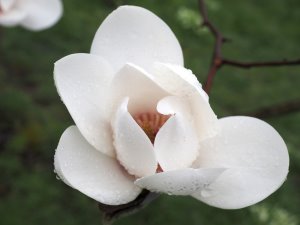
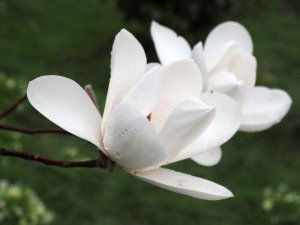
A trip to Forty Acres but every magnolia frosted and just a few coming now with little colour. Old Park is much the same story.Magnolia x loebneri ‘Champaign’ flowering for the first time in Old Park. An odd name but quite pretty. A US loebneri hybrid which is an improvement on the pinks and well worth growing.
Then to Penvergate to see how that was looking.
A rather battered couple of flowers on Magnolia ‘Sibylle’.
It is normally a job which I undertake reluctantly on holiday in the Isle of Wight but I am now, in enforced isolation, tackling the final batch of 120 to 150 care articles for every genus or species/variety of plant which Burncoose Nurseries offers. In all I have written around 520 of these already over the last five years interspersed with visits to Isle of Wight gardens to get pictures of as many of them as possible growing in gardens. Ventnor Botanic Garden has been perfect for this. Each care article is 200 to 300 words but many are much longer when covering larger plant groups like acers, magnolias or camellias.The point is to make the Burncoose website a genuine destination not just for people who want to buy plants but, more importantly, for those who want knowledge and advice about how to grow them. As an example of how this can work 3,000 people read the acer care article each month and even obscure plants receive 20 to 40 care article views in the spring. I guess half our 1.5 million visitors are now using us as a reference point for information.As ever, in today’s digital age, where attention spans are minimal, pictures become essential. The website already has four or five pictures of each plant we sell in bud, flower, bark, autumn colour, in a pot as you would get it, etc. What the care articles bring to the party now are, where possible, a growing set of pictures of the trees, shrubs and herbaceous plants actually growing and performing in a variety of different gardens. Over the last springs and summers the Burncoose team have visited many RHS, National Trust and other private gardens seeking new pictures of plants ‘doing things’ rather than them just sitting in the nursery.Each new care article therefore has a selection of pictures which are very different from the ‘selling’ pictures alongside individual plants. This has all taken a huge amount of time and effort. Karol now has a gigantic plant database with pictures of all manner of different plants. Those we do not currently stock we may well do one day. The time and effort required by Julie at Forgecom, our longstanding website designers and managers, to put all this information onto the website should not be underestimated either.I feat that, between us, we will have made some mistakes. Perhaps even some unwitting ‘howlers’ which will no doubt be spotted along the way. The care articles try to represent our personal experiences with plants in what I hope is a down to earth manner. Not too much botany or fancy Latin but this cannot always be avoided.If you search this diary for a particular plant you should get a picture or two but the data in the diary is small compared to the plant database behind the website itself.Sadly I am left now with writing about the plants I do not know well myself or the larger plant genus that are so varied that it is difficult to work out quite how to make the care articles simple or consistent. Previously, with plants which I knew well, I could bash out 10 articles a day and still have a pub lunch. With this lot five a day (and no pub lunch) is rather more of a struggle.Then the even bigger ‘excitement’ of starting to proof the 2021 mail order catalogue three months early.Inevitably I get bored with Abies and Alnus which are remarkably dull categories to write about and so to look at some plants yet again!This is the third of our large Daphniphyllum to be dying. One two years ago and two on the way out now. One left. All a long way from each other. The last two seemed to have major rot at the base but this is not obvious here. Do they have short lives where they over flower or are they just susceptible to honey fungus? One branch looks ok while most of the tree is joining the dodo.
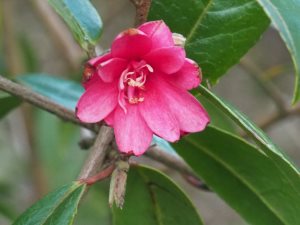
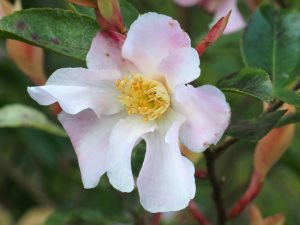
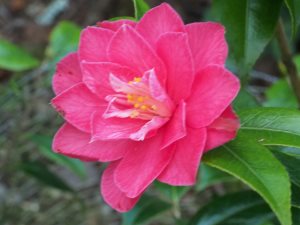
We have now removed the roots and stones from the newly cleared area around the Tin Garden. Yesterday it all got rotavated to level it all off ready for planting next week. This will be a planting in memory of Dad and will incorporate many of the hybrid magnolias and rhododendrons which he bred over his lifetime. Since he only died in early January I will only be able to make a small start on the planting this spring. It will take a year or so to assemble some of the key plants.
Pleasant day for a garden tour. Weather not as bad as forecast. Serena and Peter and nine dogs.Magnolia ‘Mr Julian’ with a few half decent flowers emerging lower down.
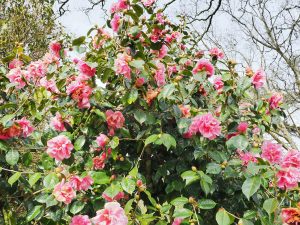
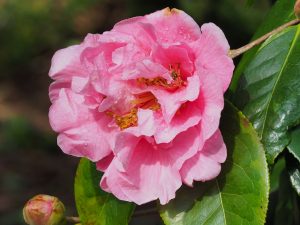
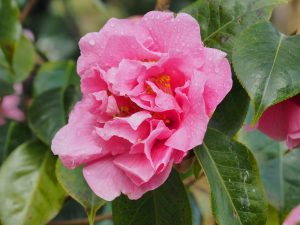
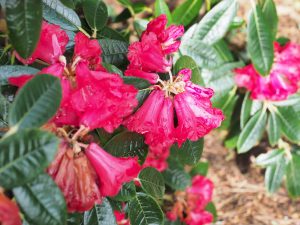
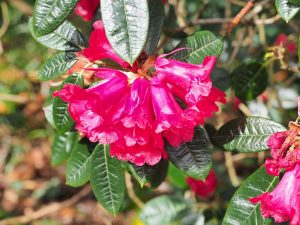
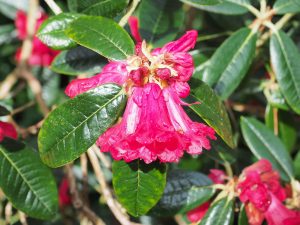
2017 – CHW
Another private tour party and quite a long one also.
Magnolia x loebneri ‘Snow Drift’ – very few tepals in this one compared to all the others. Pretty in its own way and worth its place on the drive by the fernery. Nicer than ‘Merrill’?
Rhododendron moupinense by the cashpoint has emerged unexpectedly from an overpowering podocarpus. You cannot say it is flowering early and no earlier than the Rhododendron ‘Golden Oriole var Talavera’ shown on Monday.
Ann Swithenbank from the BBC Radio 4 Gardeners Question Time rings me at Burncoose to enquire which magnolias flower for a second time in September/October. She needs to answer a tricky question. Magnolia soulangeana and Magnolia lilliflora nigra and their various hybrids exhibit this characteristic. Magnolia ‘March-till-Frost’, and Magnolia ‘Star Wars’ are perhaps the best examples but the secondary flowers are often a muddy purple and hidden by the leaves. Swithenbank does not offer a fee for this information for which she is being paid so perhaps we may get a mention sometime.
2003 – FJW
608 adults come round the garden – fine day – DRY.
1997 – FJW
2000+ around garden after too heavy publicity – DRY.
1994 – FJW
Very wet first quarter.
1986 – FJW
Very late year – pink Campbellii ‘seen’ by Easter public for first time for a long while.
1963 – FJW
David took first solo steps.
1962 – FJW
As expected magnolias poor – Salicifolia, Diva, Robusta, Campbellii and molicomata in that order of success. Reticulatas skinned of leaf. No azaleas out at all.
1945 – CW
Rob came down for the first time and saw the last flowers of Magnolia campbellii – Sargentiana, Robusta, Dawsoniana and Diva. Rho sinograndee at its best. Reds very good and the first of the Arboreum – Auklandii hybrids. Blue Tit, Yellow Hammer, scintillans and Camellia all very good. The Bullatum x Moupinense are very nice.
1933 – JCW
All the Corylopsis are very good indeed. Cherries just starting to open. Hybrid Calophytums are good and so the species. Rho fargesii is very nice.
1930 – JCW
Corylopsis pauciflora is very nice. C williamsii fair.
1920 – JCW
The double cherries are nearly at their best.
1915 – JCW
Bean left. Frost had cut all the stuff, but some Fortuneiis stood it.
1900 – JCW
Jacko just pinched out, none of the above within five days of being open.
1899 – JCW
Several G mundi, G of Leiden. Sir Watkin, Scott (1), Griflamme, all Torch. Plenty of Blackthorn in flower, a few tulips, Jacko open.





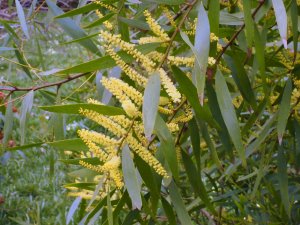
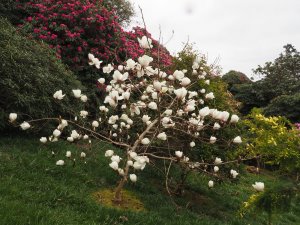
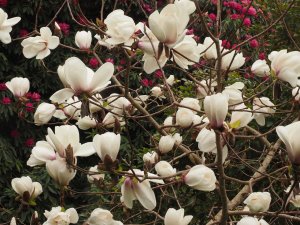
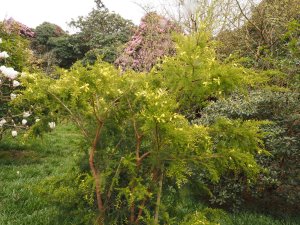
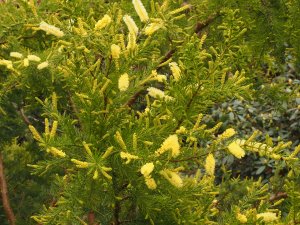
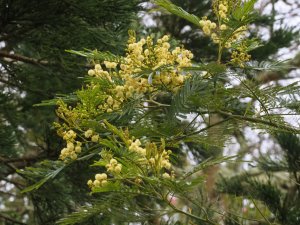
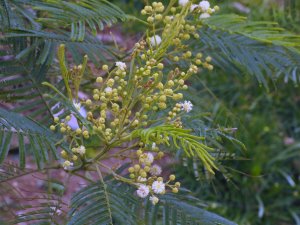
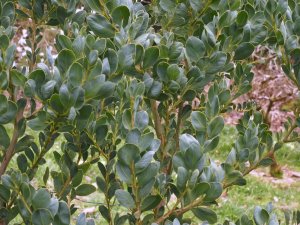
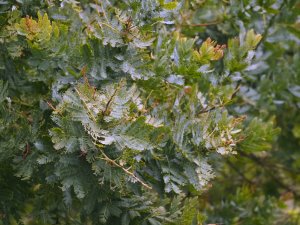
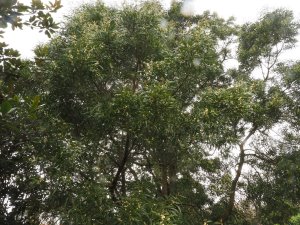
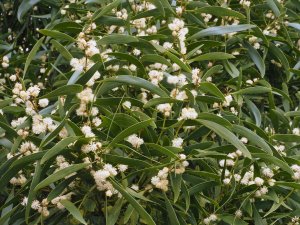
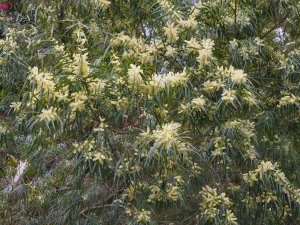


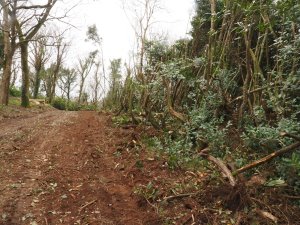
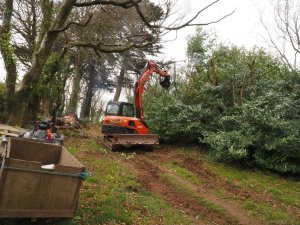
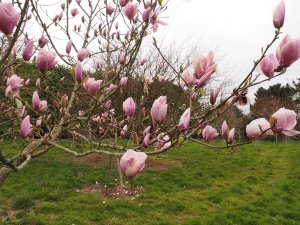
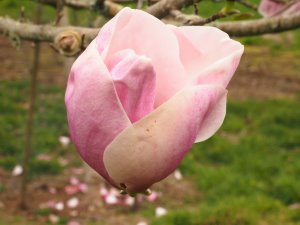
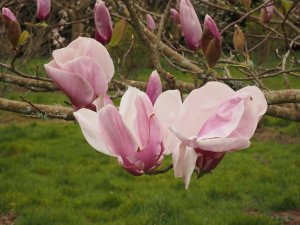
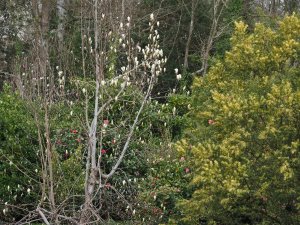

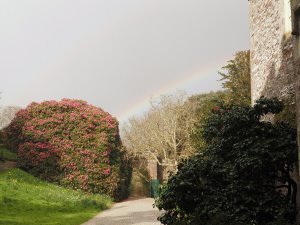
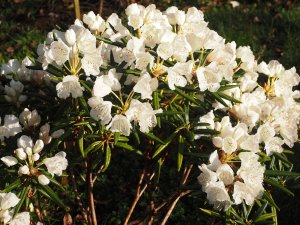
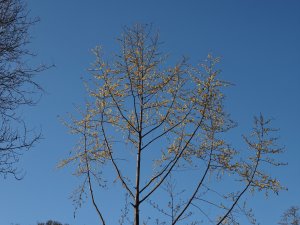
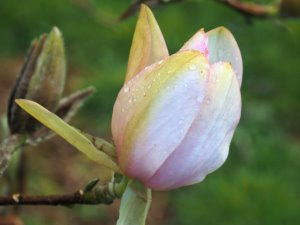
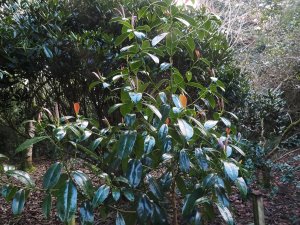
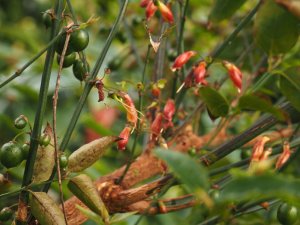
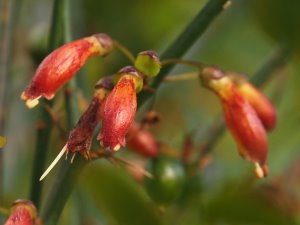
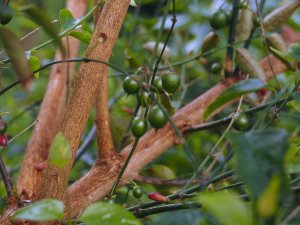
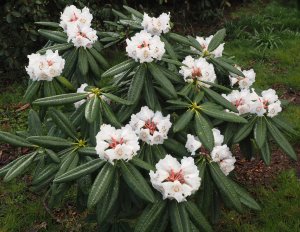
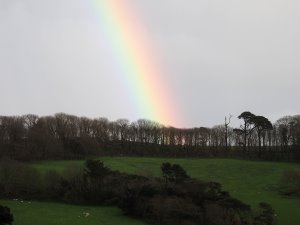
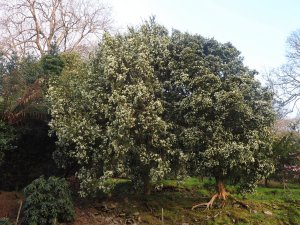
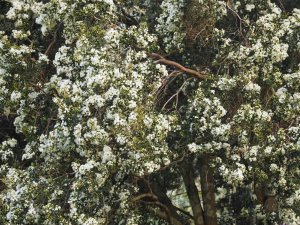
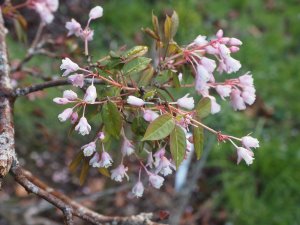
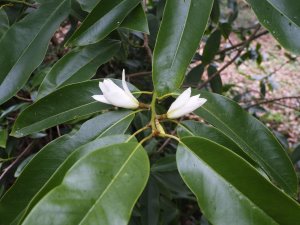
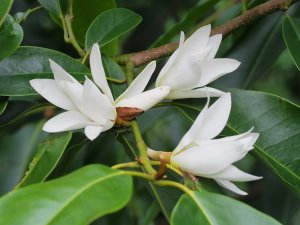
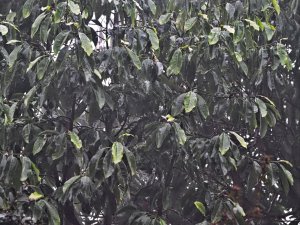
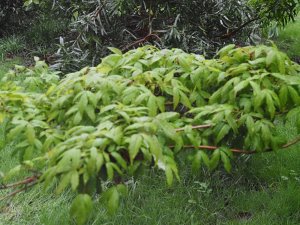
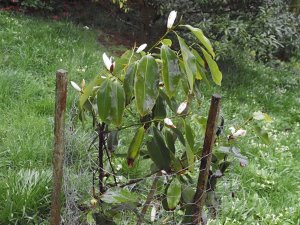
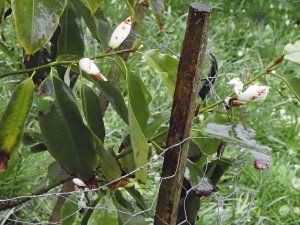
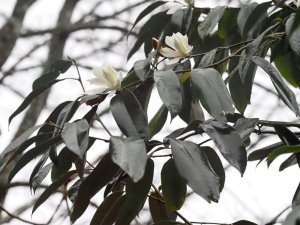


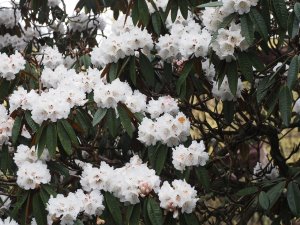

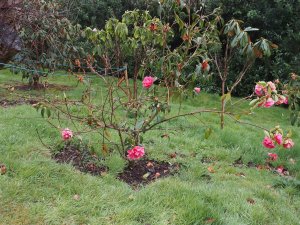
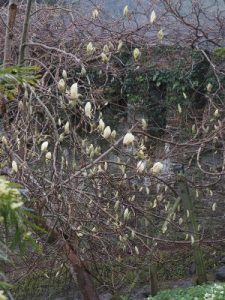
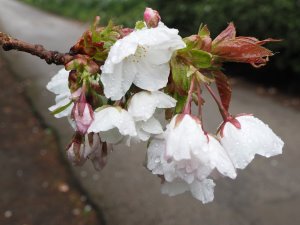
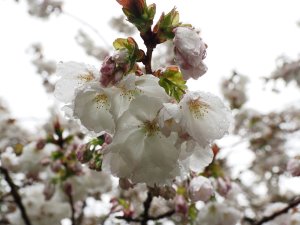
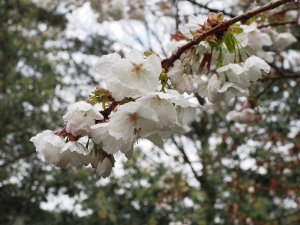
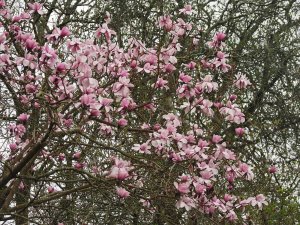
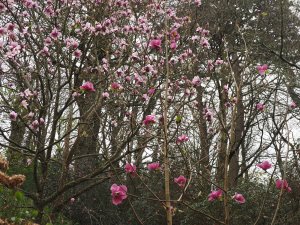
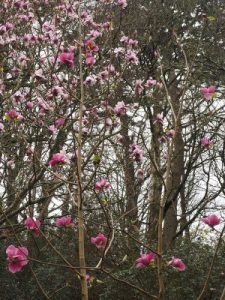
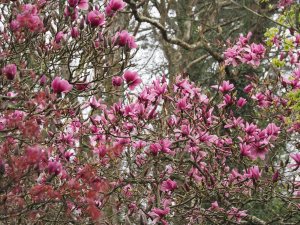
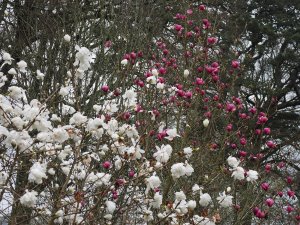

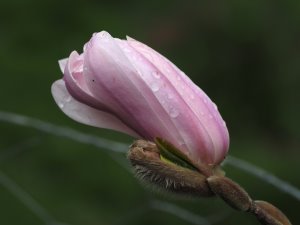
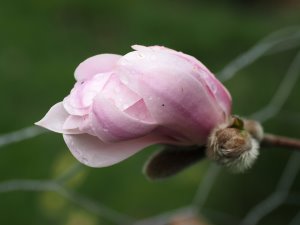
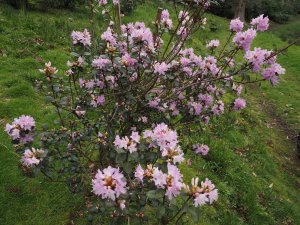
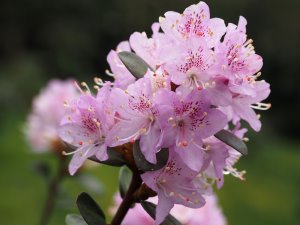



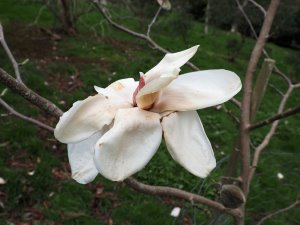
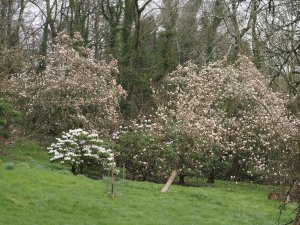
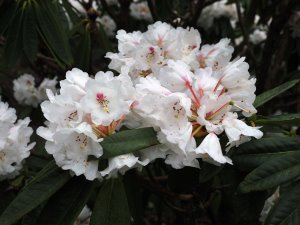
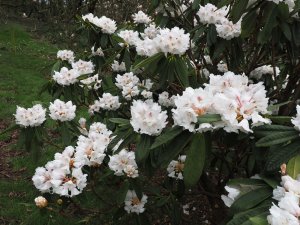
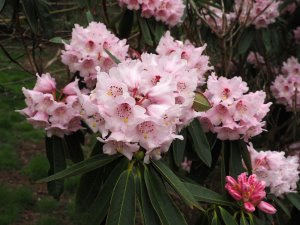
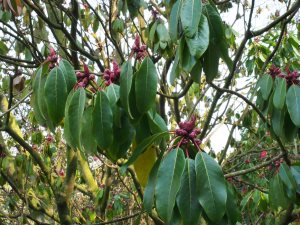
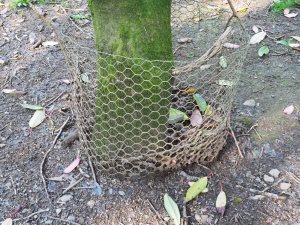
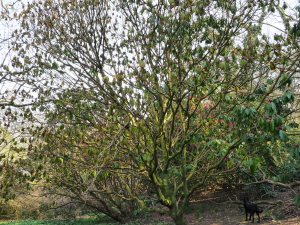
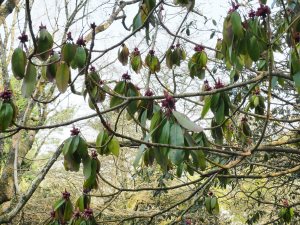
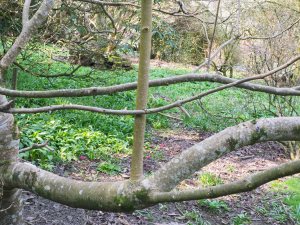
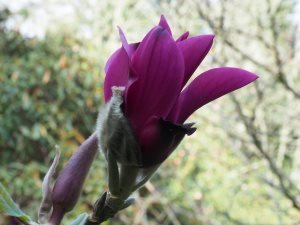
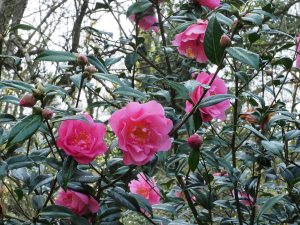
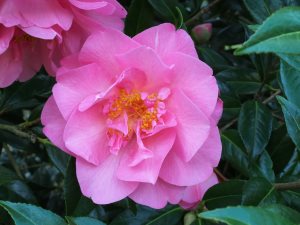
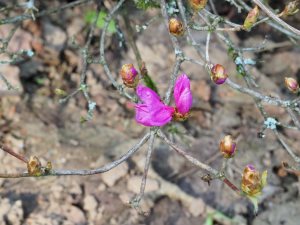
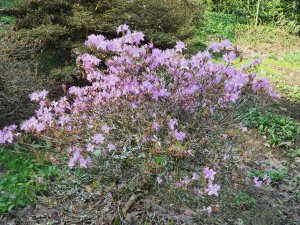
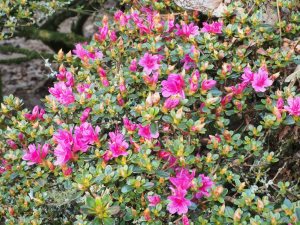
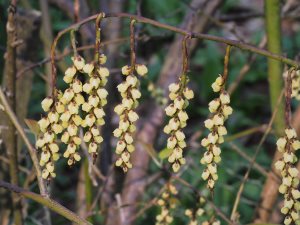
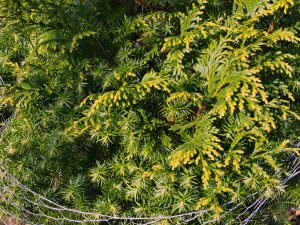
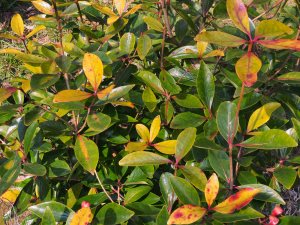
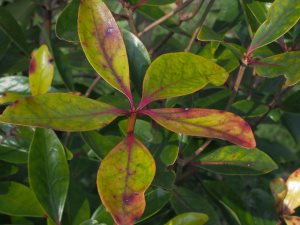
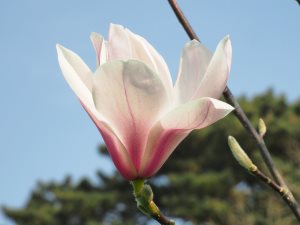
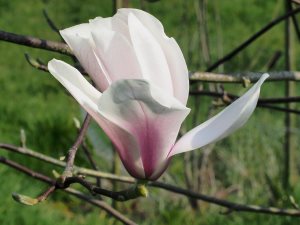
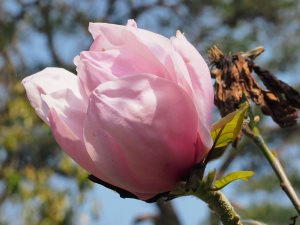
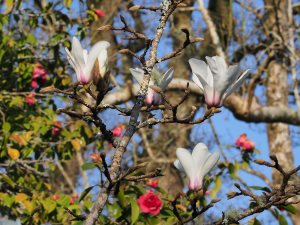
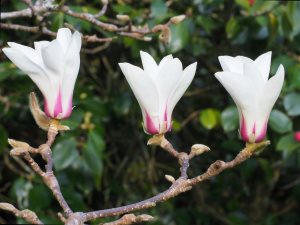
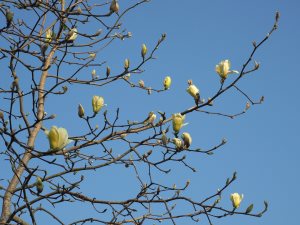
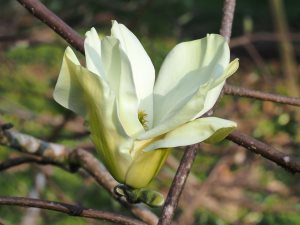
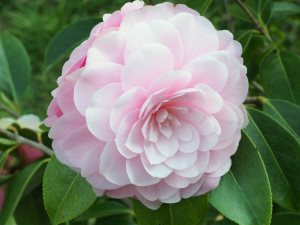

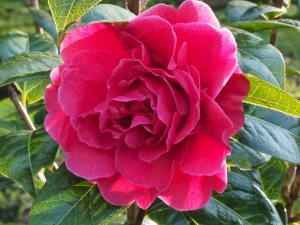
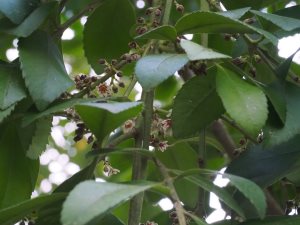
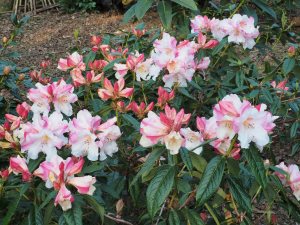
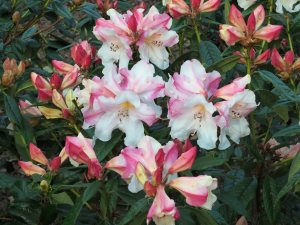
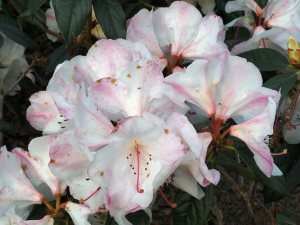
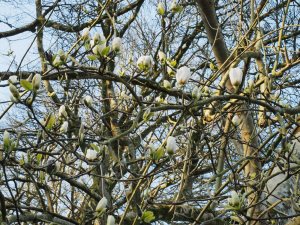
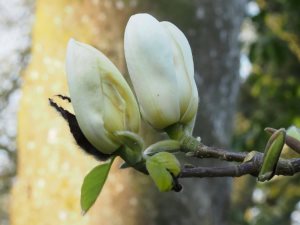
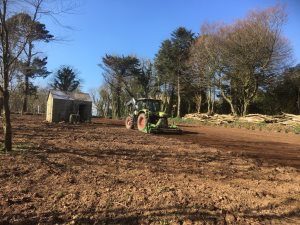

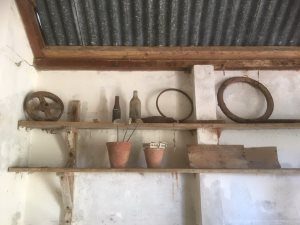
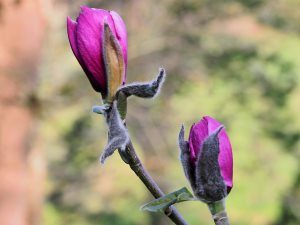
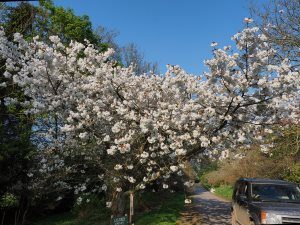
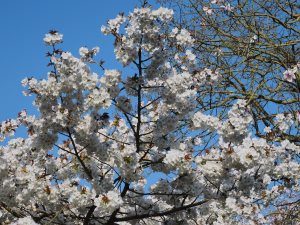
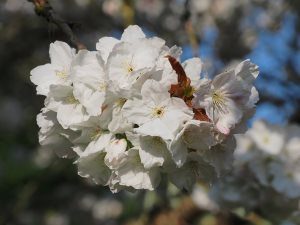
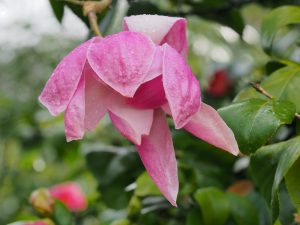
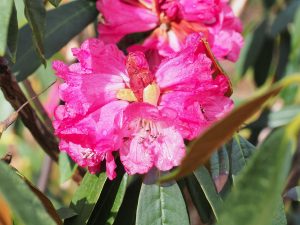
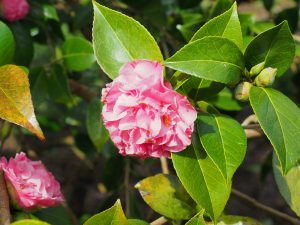
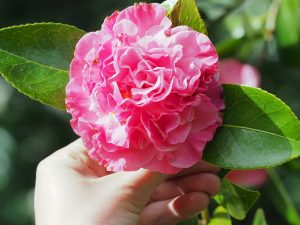
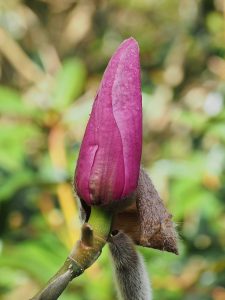
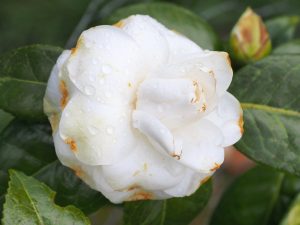
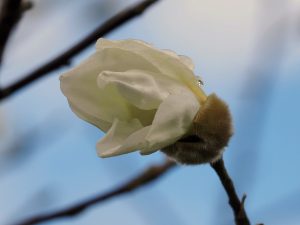
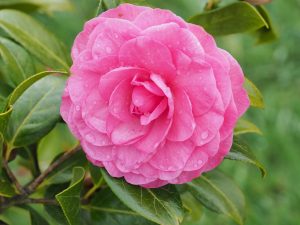
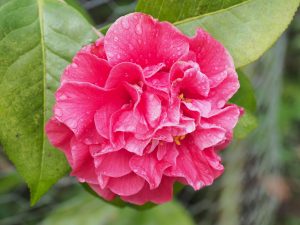
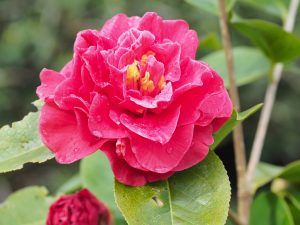
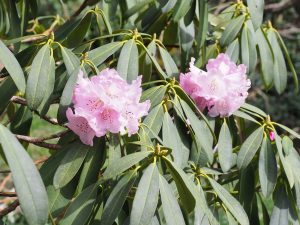
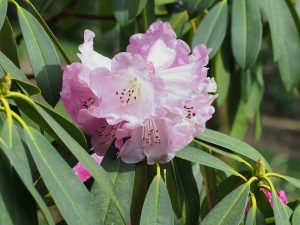
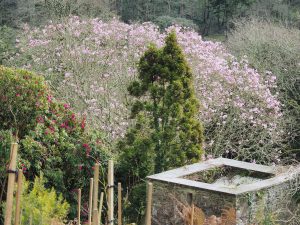
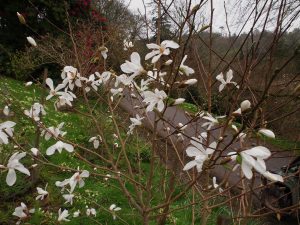
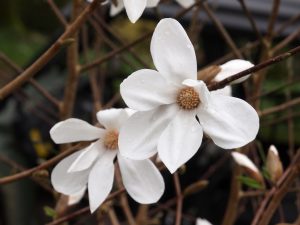
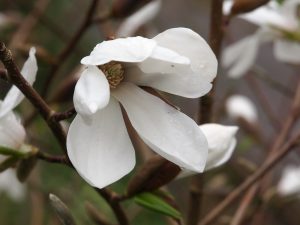
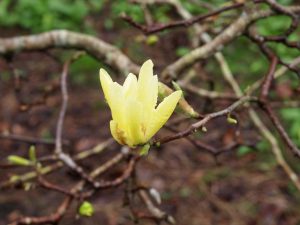
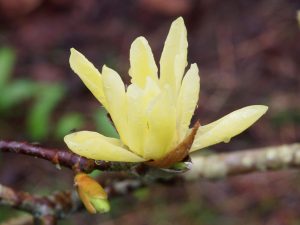
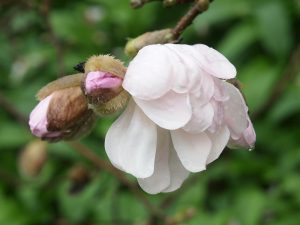
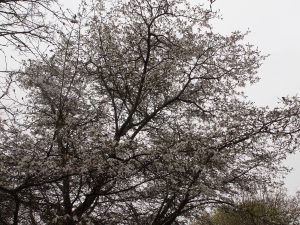
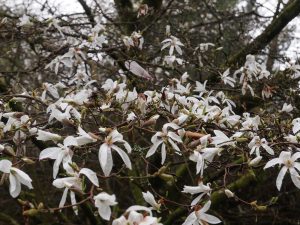
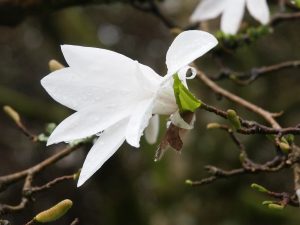
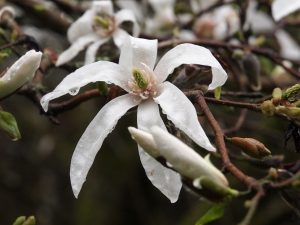
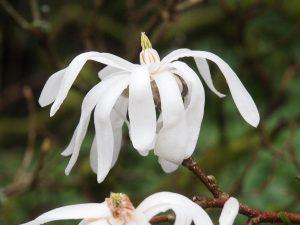
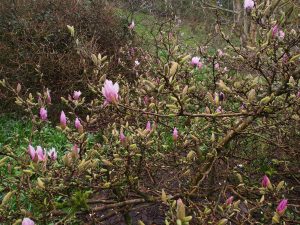
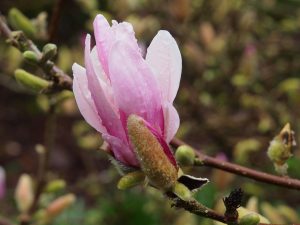
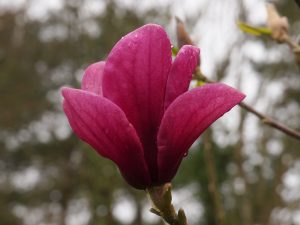
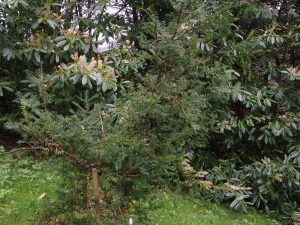
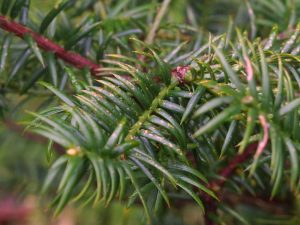
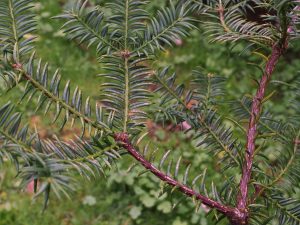
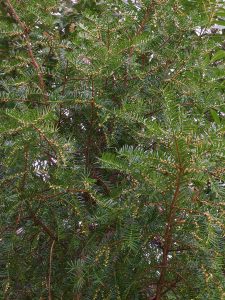
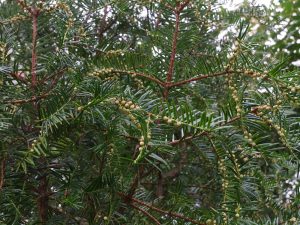
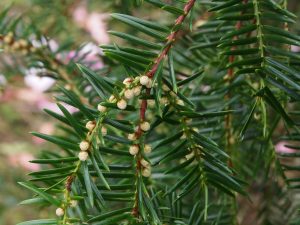
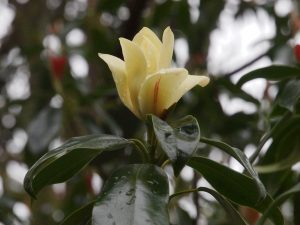
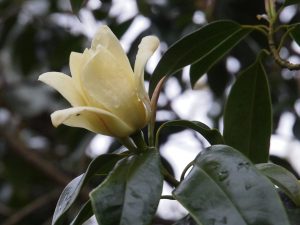
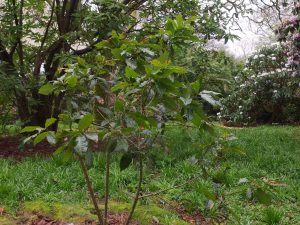
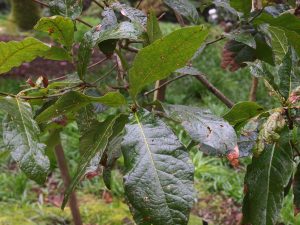
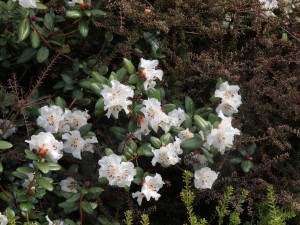
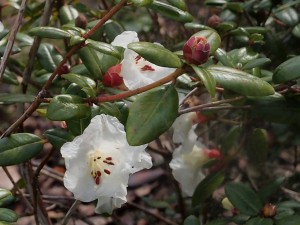
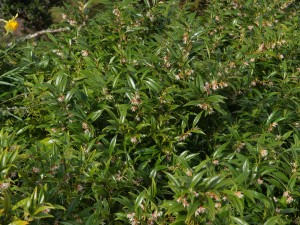
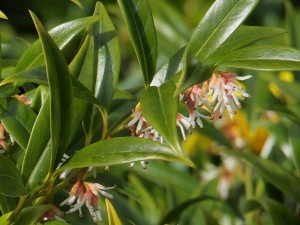
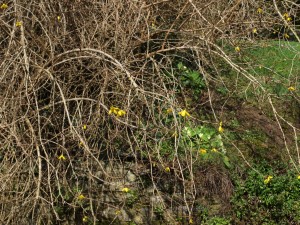
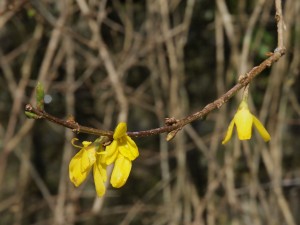
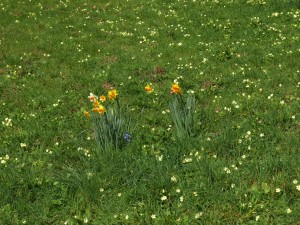
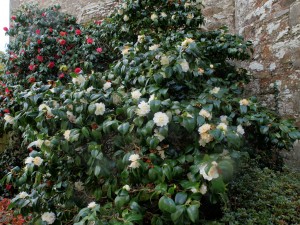
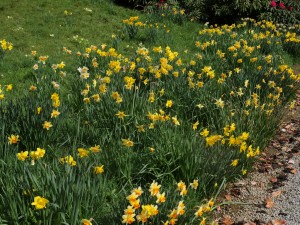
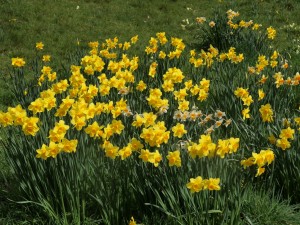
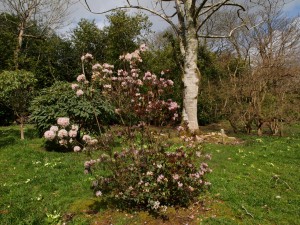
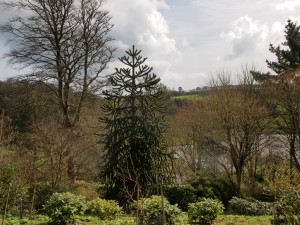
to 30. March ’20
wonderfull pictures of Camellia ‘Mary Phoebe Tailor’. By ‘stinking’ botanist just mean that this plants have a easily feasable odour, in case of some Torreyas only when crushing the leaves. Torreya taxifolia is susceptible to Phytophtora torreyae in the hot climate of its North-Florida home, but does much better in cooler sites.
Daphniphyllum does well on quite dry sites, it survived here (Rhine) very dry and hot summers with only some leaves dropping, so i guess it is susceptible to rot in to humid soils.
Regards
Hello, looking to acquire Camellia “Mimosa Jury”….can you assist….thank you, Ken.
Dear Mr Wilson
Sorry for the delay in replying to your enquiry about Camellia ‘Mimosa Jury’. We did have a very few plants in stock, which we imported in the autumn from France, but sadly these have already all been sold from Burncoose Nurseries. We will check and see if we can add some to our spring order from France and let you know if we have any success.
Thank you for your enquiry.
Charles Williams